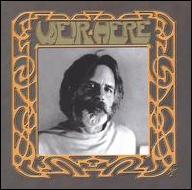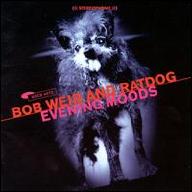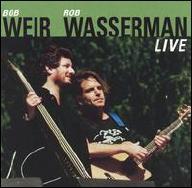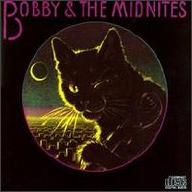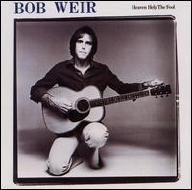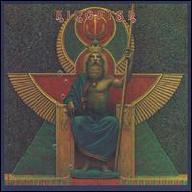Born in San Francisco in 1947, Bob Weir was raised in suburban Atherton by his parents Eleanor and Frederic Weir. After dabbling with piano and trumpet, he turned to the guitar at the age of 13. Suffering from intense, undiagnosed dyslexia, he struggled academically and was sent off to a Colorado boarding school where he met future songwriting partner John Perry Barlow. He was expelled and returned to the Bay Area where on New Year's Eve 1963 he met and befriended Jerry Garcia. Five years older than Weir, Garcia had already established himself somewhat in the local folk scene as a guitarist and banjo player, but the two found a musical kinship that they would continue to explore over the coming decades. A series of jug bands morphed into the electrified Warlocks who, after providing the live soundtrack to Ken Kesey's famous 1965 Acid Tests, became known as the Grateful Dead.
Weir developed his unusual rhythm style by playing between the sweet, articulated lead guitar of Garcia and the avant-garde basslines of Phil Lesh, who joined the Dead as a newcomer to his instrument after studying trumpet and serial music with composer Luciano Berio at Mills College. The band's sound, a psychedelic hybrid of rock & roll, jazz, folk, and country, was developed through the long, meandering improvisations that seemed to spin out from any given song. Weir's role as a rhythm player was to give force and color to the developing music. Like a jazz guitarist, his parts were often less evident in the mix, while profoundly shaping the overall sound.
Still in his teens during the band's early phase, Weir's initial songwriting efforts mirrored those of Garcia and Lesh, though a bit less successfully. By the early '70s, he had again crossed paths with Barlow and the two began their creative relationship in earnest. Soon, Weir was producing songs like "Sugar Magnolia" in his own distinct style -- a blend of Americana and the odd voicings that were his specialty. As the health of the Dead's original frontman and keyboardist Ron Pigpen McKernan waned, Weir found his rich baritone increasingly at the center of attention and developed a stage personality to match it. In 1972 he took Warner Bros. up on their offer to release a side project and with the help of his bandmates -- and future Dead members Keith and Donna Godchaux -- recorded the solo album Ace. His first major creative statement as a songwriter, Ace produced a bevy of classic Weir songs almost all of which soon became staples of the Grateful Dead's live set including "Playing in the Band," "Cassidy," and "One More Saturday Night." Throughout the late '70s he continued to pursue extracurricular projects, playing with the Bay Area band Kingfish, leading the Bob Weir Band, and recording a second solo album, 1978's Heaven Help the Fool, all while maintaining the Dead's heavy touring schedule. He also contributed Dead classics like "Estimated Prophet" and "I Need a Miracle" to the band's studio albums and live sets of the era. Aside from a stint leading another solo project, Bobby and the Midnites, the Grateful Dead remained Weir's primary gig throughout the '80s. Their decades of incessant touring and massive grassroots following had already helped secure them a unique place in American culture and they were justly rewarded when their 1987 song "Touch of Grey" became a surprise hit single, vaulting them into the mainstream of a new generation.
Heading into the '90s, the band was coasting on a wave of public goodwill with a huge multigenerational audience and a vast network of jam bands that had sprung up in their wake.
As Garcia's dependence on drugs increased, Weir often found himself in the position of de facto bandleader, a role that continued to evolve even after Garcia's sudden death in July 1995. Following the Dead's dissolution later that year, he turned to RatDog -- a side project he'd launched earlier that year -- to fill the vacuum. Through a revolving lineup, they toured regularly, working their way through clubs and theaters, building up a repertoire of new Weir songs and reworked Dead songs. This period also saw the first of several post-Dead re-formations, beginning with the Other Ones, a touring group that was essentially the Grateful Dead minus Garcia.
Throughout the early years of the 21st century, Weir continued to develop as a bandleader while functioning as an elder statesman for new generations of jam bands. The Other Ones eventually gave way to the Dead, which also featured Phil Lesh, Mickey Hart, and Bill Kreutzmann. Once that group faded away, Weir and Lesh played as Furthur before he resurrected RatDog in 2013. A year later, wheels started turning for a 50th anniversary celebration of the Grateful Dead. First came The Other One: The Long Strange Trip of Bob Weir, a documentary that debuted at the Tribeca Film Festival in 2014. Then, in the summer of 2015, the group reunited under the Grateful Dead banner one last time for a series of farewell concerts in San Francisco and Chicago. Filling the Garcia role was Trey Anastasio, a former Dead acolyte whose band Phish had more or less picked up the Dead's mantle in the '90s and created their own lasting legacy. The pairing worked so well for the reunion concerts that Weir, Hart, and Kreutzmann sought out another able, if somewhat unlikely, lead guitarist to help them continue touring the Dead's catalog. With John Mayer now stepping into the Garcia role, Dead Company mounted a lengthy and successful tour that stretched into 2016. In the autumn of that year, Weir released Blue Mountain, his first solo album in 40 years. Largely co-written with singer/songwriter Josh Ritter and co-produced by Josh Kaufman, Blue Mountain was a low-key, atmospheric set focused on Weir's signature cowboy songs.
After playing some duet concerts with Lesh in 2018, Weir formed yet another new band, Wolf Bros., with Don Was and Jay Lane. While their initial 2020 tour was interrupted by the COVID-19 pandemic, they reconvened a year later, with highlights from their run of June shows seeing release as Live in Colorado in February of 2022, with Live in Colorado, Vol. 2 following shortly in October of the same year. ~ Timothy Monger & Jesse Jarnow, Rovi
|
1
|
|
Mexicali Blues |
|
2
|
|
Big Iron |
|
3
|
|
Hypnotize |



